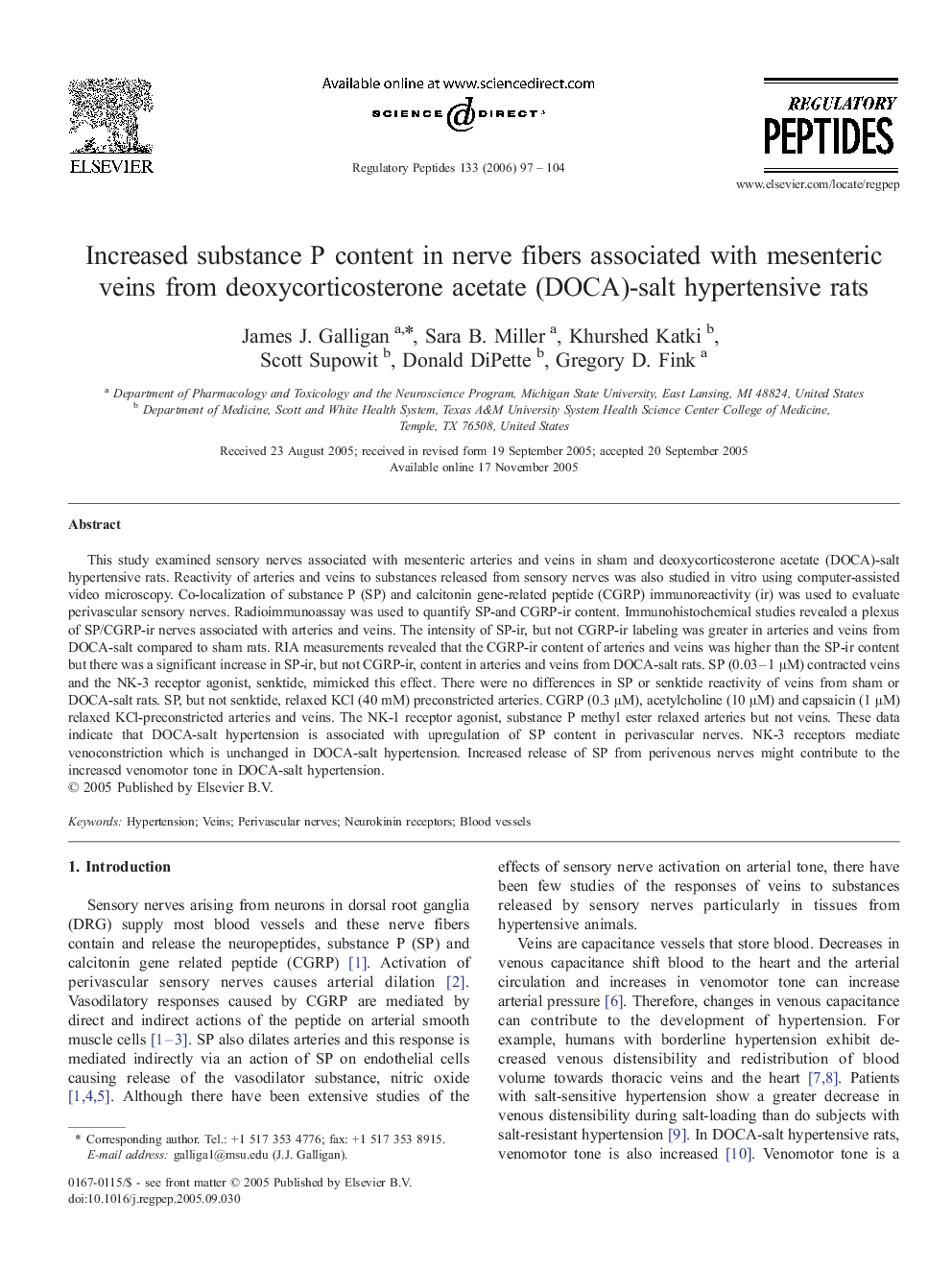| Article ID | Journal | Published Year | Pages | File Type |
|---|---|---|---|---|
| 2023422 | Regulatory Peptides | 2006 | 8 Pages |
Abstract
This study examined sensory nerves associated with mesenteric arteries and veins in sham and deoxycorticosterone acetate (DOCA)-salt hypertensive rats. Reactivity of arteries and veins to substances released from sensory nerves was also studied in vitro using computer-assisted video microscopy. Co-localization of substance P (SP) and calcitonin gene-related peptide (CGRP) immunoreactivity (ir) was used to evaluate perivascular sensory nerves. Radioimmunoassay was used to quantify SP-and CGRP-ir content. Immunohistochemical studies revealed a plexus of SP/CGRP-ir nerves associated with arteries and veins. The intensity of SP-ir, but not CGRP-ir labeling was greater in arteries and veins from DOCA-salt compared to sham rats. RIA measurements revealed that the CGRP-ir content of arteries and veins was higher than the SP-ir content but there was a significant increase in SP-ir, but not CGRP-ir, content in arteries and veins from DOCA-salt rats. SP (0.03-1 μM) contracted veins and the NK-3 receptor agonist, senktide, mimicked this effect. There were no differences in SP or senktide reactivity of veins from sham or DOCA-salt rats. SP, but not senktide, relaxed KCl (40 mM) preconstricted arteries. CGRP (0.3 μM), acetylcholine (10 μM) and capsaicin (1 μM) relaxed KCl-preconstricted arteries and veins. The NK-1 receptor agonist, substance P methyl ester relaxed arteries but not veins. These data indicate that DOCA-salt hypertension is associated with upregulation of SP content in perivascular nerves. NK-3 receptors mediate venoconstriction which is unchanged in DOCA-salt hypertension. Increased release of SP from perivenous nerves might contribute to the increased venomotor tone in DOCA-salt hypertension.
Related Topics
Life Sciences
Biochemistry, Genetics and Molecular Biology
Biochemistry
Authors
James J. Galligan, Sara B. Miller, Khurshed Katki, Scott Supowit, Donald DiPette, Gregory D. Fink,
